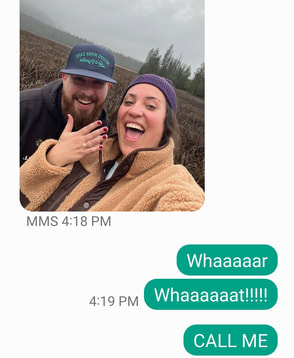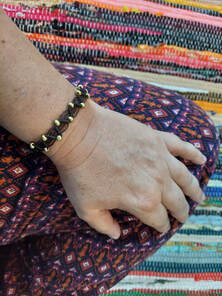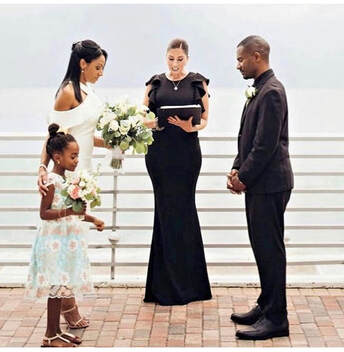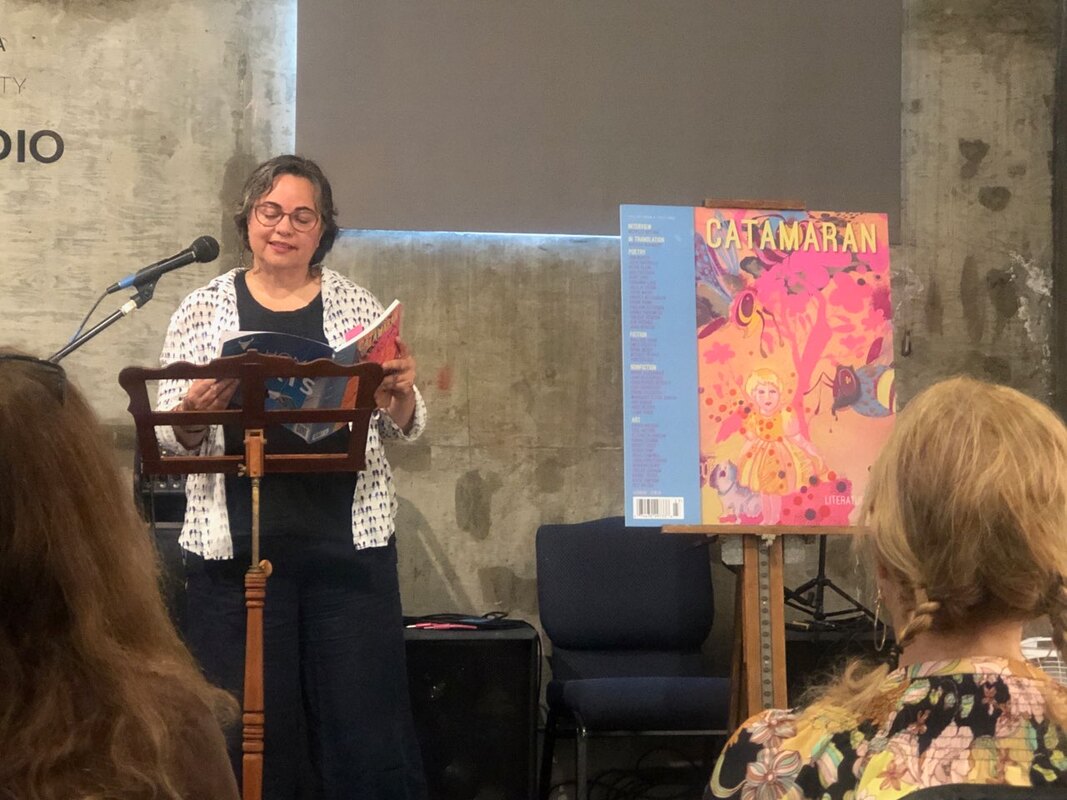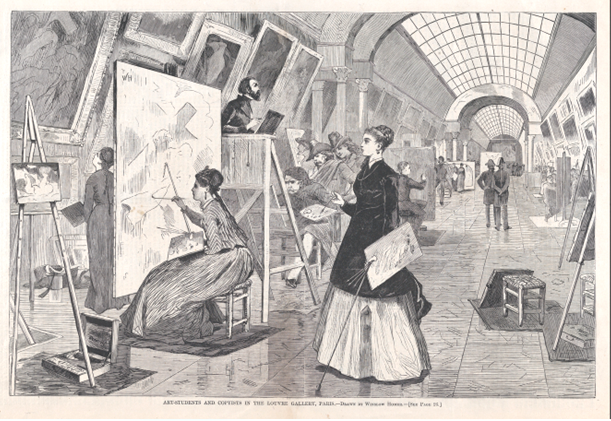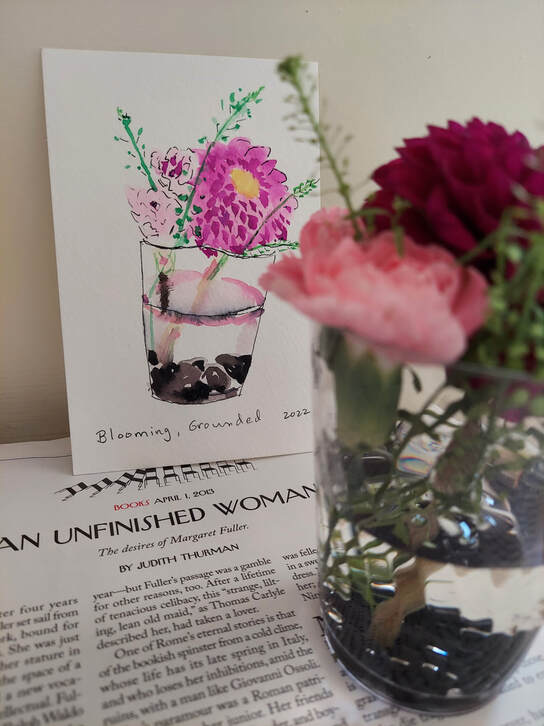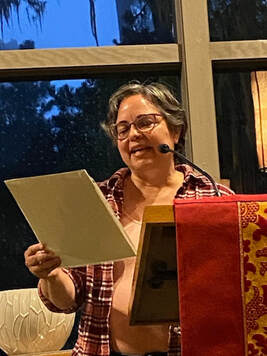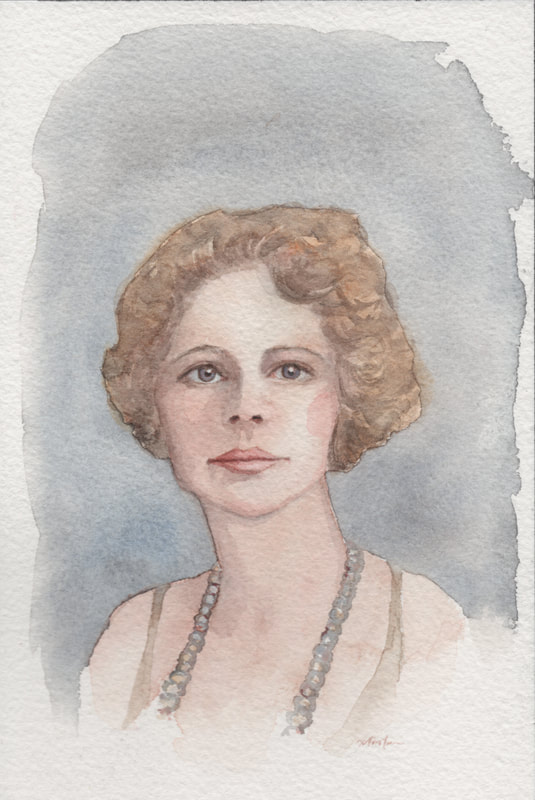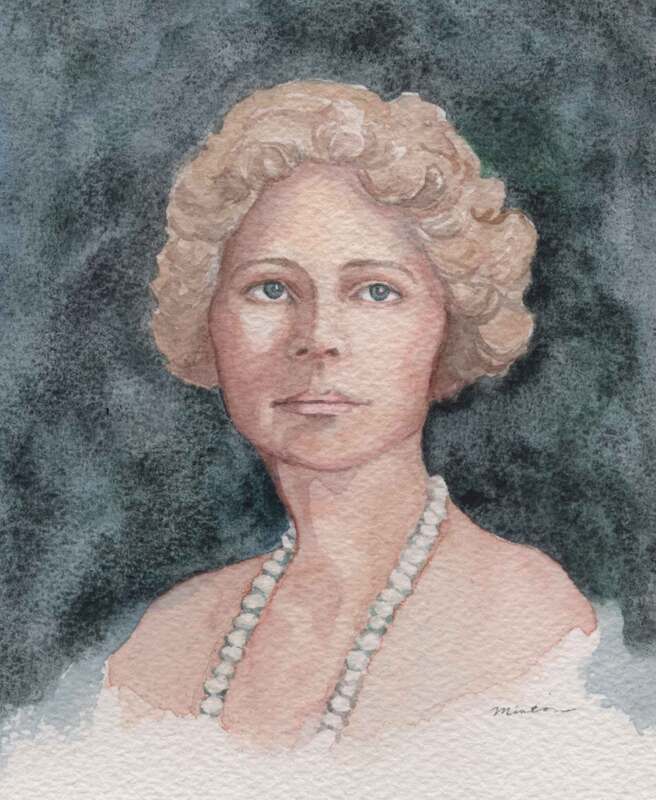|
My daughter, Peggy, and her sweetheart, Monty, got engaged over the holidays. We are all happy and excited for them. I won't be at the wedding in my old Officiant capacity -- for the first time, I'll show up as Mother of the Bride. This turns out to be a completely different role!
What to do when facing a completely new role? I'm studying, of course. And Peggy is in charge. We had a launch meeting at the local breakfast place; we each have lists. Engagement photos, bridal outfits, tasting -- we're in for a fabulous, if sometimes hair-raising experience. The accomplished, Bay-Area-based events planner, Alison Hotchkiss wrote what seems to be a quintessential planner, soup to nuts: All The Essentials Wedding Planner, and Peggy is working through it. She's also using Zola online. This planning is stirring up memories of my own two weddings, very different from one another and from this one. And I'm remembering all of the hundred or so wedding ceremonies that I led as officiant. It really is a watershed rite of passage, a slow mystery -- becoming a married person. I feel so lucky that The Wedding Officiant's Guide is again, at least for today, placing top in Amazon's Wedding ceremonies, vows and toasts category. And fifteenth in Romance Fiction Writing Reference! Chronicle Books makes excellent books, and I'm proud to be one of their authors.
0 Comments
I've been building scaffolding around writing a book: supports to give my project many chances to succeed.
The first eighteen months of starting this book involved resting, wool-gathering, reading. Writing questions to myself in a small black journal dedicated to the book. Mulling things over. An apt image would be a large, shallow collecting basket for those fragments of herbs, bits of shiny stuff and strands of half-stories. Another crucial part was taking a summer off from researching the book-- something that I could never have done in my corporate career. But I was so burned out; it was a huge relief to just be a human being and not a writer for three months. I spent hours outdoors. I painted with watercolors and swam, cooked, spent time with family and traveled. When fall came, I was rested and ready. I had to get my house in order. I gathered all the books on my topic into one area. I printed some of my notes. I taped photos of my subjects to the wall in my office. Next came the talisman. From Etsy, I bought and tied on an inexpensive thread bracelet as a reminder of my commitment to this book. I made a double square knot. Either the bracelet wears away and falls off, or the book is completed, whichever comes first. This is my own invention and I have done it for three books so far. Also in the magical realm, I remembered a lesson from writer and teacher Kate Evans and wrote a permission slip, posted on the wall, which allows me to say yes to the everything that helps me write the book, and say no to mostly everything else. You can call on ancestors and angels for help in the permission slip, too. Another author/teacher, Joan Rose Staffen, recommends writing a manifesto, an extended permission slip where you note which hours work best for you, what your rewards might be, and what you have at stake. Both methods strengthen one’s writing self. As author and journalist Cathleen Miller often told her students, “Only YOU can write this book.” Then more practical steps. I blocked out writing time during weekday mornings in my phone calendar. On the whiteboard I created an 18-month timeline, breaking the time into chunks for drafting scenes (relatively quickly, 12 weeks) and more time for revision and polishing. This schedule gives me December off for holidays and family. Also April, to take a breather before more edits. On yellow pads I listed actions to take. The lists are not necessarily in order. As composer John Cage famously said, “Begin anywhere.” This year, for the first time, I opened a large monthly calendar on paper where I briefly log in, by hand, what I accomplished that day. I created documents for chapter one, the table of contents, the introduction, the bibliography, the chapter notes. And I created a tracking sheet for elements of the book, including the index and acknowledgements. Here's a writing accelerator: I bought Ann Randolph’s Unmute Yourself writing class, 9:00 am Monday through Friday, to join anywhere from fifty to a hundred other people on Zoom while we write. This is my second go-round of structure, ritual, and fellowship. The class lasts a month and the low price is well worthwhile to jumpstart the morning writing routine. Three weeks in, I’ve completed drafting Chapter 1, and parts of Chapter 2 and the introduction. Once I’ve finalized the table of contents, I'll review the notes from the past year and tuck them into a tickler file, confining them to their chapter. The process I’m describing evolved over time. It gives me enough processes and rituals and tools to keep addressing the work, morning after morning. Each day that I log progress, I feel some satisfaction. I wrote, and the book is moving in the right direction. I hope something in this laundry list might help someone else as they think through how to attack their own next book. 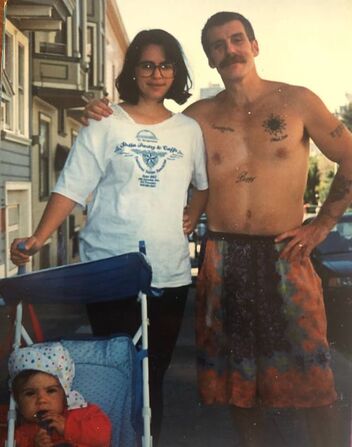 Yesterday I reviewed my log of writing, reading and art-making since January, and was pleasantly surprised. My current projects are so much in their beginning stages that everything feels loose and mysterious, and I had wondered whether much had been accomplished at all. But there it is in black and white – scores of days of generative writing, mostly essays that can feed the projects, plus several months of reading (biographies) for research, and very recently, some summery days of plein air painting and collage. My studio is a chaotic, fertile mess. I flew to Seattle to soak up a writer’s conference. I pitched a lecture about Spiritualism and historic women in the San Jose area and landed a date at the Winchester Mystery House; I reviewed Marc Zegans’ haunting book of San Francisco poems, Lyon Street, and now the review lives in the summer print edition of Rain Taxi. What an honor! And poems I wrote about my Dad were published online in the summer edition of the excellent and tender Months to Years Literary Journal. That feels like a reasonable workload for six months. I am now my own boss, and my boss gives me Fridays off. Late last fall we sadly learned of the death of my first husband, the painter, poet and cartoonist Momo. Father to my daughter and stepdaughters, Momo and I shared nearly thirteen years of art shows and escapades, first in the narrow alleyways of San Francisco’s North Beach, then in Eugene, Oregon, and finally in an outpost in pre-Google Mountain View. I’ve been reviewing those days, sifting through them. Nostalgia could come too easily – “those were the creative days.” But in fact, that’s not true. I was an active poet and performer when I met him, and had begun to paint and sculpt. When we met and married, through no real fault of his, I became a Shadow Artist, an important phrase by Julia Cameron. The spotlight was on Momo. I became his manager, curator, driver, dresser, and the one who paid the bills. I guess I needed all that experience – it grew me into a successful project manager and corporate communicator. But only after the marriage ended did I gain the energy to write books, and to create piles of collages for art shows. Some successful artistic couples collaborate to create a rich body of work – but it just didn’t work out that way for me. Now I keep learning lessons over and over about how to stay a healthy and fully creative human being. For example, the writing and art won't happen unless I arrange conditions for the flow -- a place to work, the right tools, a time carved out on my calendar. And to say yes to my current projects means saying NO to so many other attractive things, especially in this "post-pandemic" summer when theaters, concerts and fairs are newly revived, and travel beckons, and friends want to gather. No complaints about this abundance, but I'm working on balance. There's a new biography underway, another how-to book, a memoir and more. Thank goodness for all those years learning project management! Enjoy your summer. (This is a refreshed earlier blog post)
“Eat the butter,” a friend joked when I posted a photo of sweet, buttery cookies that I’m “giving up” for Lent this year. She pointed to a news story in which Pope Francis recommended that we consider giving up indifference to others this year. I appreciated her wisdom, and that brief exchange made me want to delve deeper into the mechanics of Lent and other religious practices – Ramadan, Yom Kippur – that offer opportunities to pray, repent, fast, and do good works or give alms. Because of the universality of this practice, I’m removing Lent’s religious coverings to get a better look at the biophysics and metaphysics of these four exhortations. Pray In my part of the world, it’s early spring, and all sorts of agitations are afoot. The weather is changeable, windy, and wet; it can be hot one moment and very cold the next; the light is bright against black shadows. Baby lambs, children, teenagers and adults alike experience growing pains. In the university where I worked the students are in the “grind” part of the semester: the gloss of starting has worn off, and the fruits of their work are still months away. This season goes so much more smoothly when I add a daily session of quiet and meditation. While an ideal diet of quiet could be a half hour in the morning and another in the evening, I’m convinced that even five minutes a day is a good start. The benefit of sitting quietly, focusing on my breath or on a positive thought, is that it gives me a chance to come back to center in the midst of all the external agitation and change. Blood pressure drops, breath can deepen. A prayer of gratitude generally arises from that quiet. Repent To repent means to rethink something, and to try to do better. When I repent, I let my mind jump out of the track of an old habit and give it a chance to start a better habit. One year I tried to cure myself of unconsciously using (and throwing “away”) single-use plastics. Later, I wanted to get back to using public transportation. Baby steps work best for me, so I jumped on the light rail every Friday, and brought my mug with me to coffee shops. Fast Like many others, I have a sneaky part in my brain that sees Lent as a chance to lose weight. Lent is not about losing weight, but in a funny way, it could be. Think about how it used to be before planes flew produce around the world all year long. In the Northern hemisphere Lent is the season in which our larder of last fall’s potatoes and apples grows thin – we’ve been eating roots and heavier foods all winter and treating ourselves with sweets (Halloween, Christmas, Valentine’s Day) as a spark of brightness in the long night. But now the ground is giving forth lettuces and young dandelion leaves, a tonic of sweet and bitter greens that fortify our livers. So the period of Lent has corresponded with eating less. But the call to fast is also the call to sacrifice something and to take that energy and pour it into the next practice, which is giving generously. Energetically, these two practices are both sides of the one coin; less for me, that I may give more to you. So I am abstaining from what I call luxury foods, and also not eating until I am actually hungry. This clarifies my relationship with food (I’m one of those emotional eaters) and frees up my energy for the next practice. Do good works/Give alms I hope I’ve established that quitting something without giving to others is not the point of the Lenten or Ramadan or Yom Kippur practice. It’s not just about me – it’s about having a loving heart and helping to create stronger social ties that heal our world. When we intend to do good, at least in my experience, the opportunities come thick and fast. This year I contributed to World Central Kitchen which brought hot meals to flooded and war-torn areas. I supported an artist-friend's book and worked for a community fundraiser. Lent is also a great time to write encouraging letters to others. There’s no shortage of opportunity. Forty-ish days Finally, this is a season with a beginning and an end. We are human; we need discrete practices that approach and recede. This chance comes every year; this year I strive to do my best, and accept that it will be imperfect. Six weeks is a good length of time to practice new habits, and maybe my new habits will stick around even longer. But give yourself a fighting chance at this—it’s not enough to just decide what to do on Ash Wednesday and then hope for the best. Track the progress. Find a small notebook and give a sheet to each of your practices. Ignore the failures—take failure out of the equation. Instead, every time you have a success, make a tick mark. See how many marks you can amass in the next forty days. Build the good habits, and allow openness and the curiosity to see what other thoughts arise about yourself, about creating a better world. And be prepared for joy to arise -- not at the end, but all the way through. This recent news is inspiring!
Governor signs legislation allowing individuals to become one-day wedding officiants Governor Kathy Hochul today signed legislation (S.739A/A.6300A) into law, creating a new path for people over the age of 18 to apply for “one-day designation,” authorizing them to solemnize a single marriage on a specified day in the State of New York. “Joining individuals in marriage is a beautiful moment that should be shared with an officiant selected by the spouses-to-be,” Governor Hochul said. “By signing this legislation into law, we are eliminating any barriers to becoming an officiant so friends and family members can share such a meaningful time with loved ones of their choosing and have their marriage recognized under New York State law.” Legislation (S.739A/A.6300A) amends the domestic relations law to enable individuals to apply for permission to be designated as an officiant in order to solemnize a particular couple’s marriage. New York is a premiere destination for weddings and this legislation is yet another reason for couples to celebrate here. State Senator Alessandra Biaggi said, “Couples in New York will now have the opportunity to be married by their friends or family— allowing them to further engage their loved ones on their special day. I’d like to thank Governor Kathy Hochul for her commitment to modernizing our law, and thank Assemblymember Sandy Galef and my colleagues for their support of this legislation.” Assemblymember Sandy Galef said, “New Yorkers joined in marriage by a friend or family member no longer have to worry about whether or not their marriage is legally valid thanks to the passage of this legislation. Thank you to Governor Hochul and my colleagues for your support of this legislation that will allow friends, family, and loved ones to share these meaningful moments without having a religious connection or political affiliation.” Happy Autumn. It’s been a productive time! I had spent the fall and winter of 2021-22 reading more than a thousand letters between two of my ancestors. The letters gave me a personal view of American history before, during and after the Civil War – and an up-close look at the tedium and heaviness of women’s domestic labor. Even better, I witnessed a novelist slowly being born within my ever-so-great grandmother Julia after her fourth daughter entered high school. In spring I joined Biographers International and attended their online conference, mulling over how we give true stories their shape. Truth be told, I would have spent another year just researching and not writing at all. I wasn't sure how to get started, still wanted to rest after a corporate writing career. But NOT writing was not doing me any good. Some meetings with coach Joey Garcia gave me a reality check and helped to relight my fire. I began to write essays about different parts of the research, and send them out. A writer I met at the Biographers conference, Susan Bailey, graciously allowed me to guest post on her blog called Louisa May Alcott is My Passion. I was finding connections between reactions to American art students in Europe in 1897, and a guidebook for art students written by Louisa's younger sister May in 1879. Here is the post. That led me to a Facebook group for fans of the Alcotts, where I found some important answers to my research questions! Santa-Cruz based Catamaran Literary Reader accepted one of my essays, and I was invited to their amazing conference in Pebble Beach. In this creative atmosphere I read, wrote, walked, even painted a little. There's nothing like having your meals prepared for you in between bouts of creativity. The teachers were great, the community of creatives was sublime. Our week culminated in a grand performance in the property's beautiful Forest Chapel. In the meantime, a friend asked me to review his forthcoming book of poems. Luckily I had gotten some training from the sensitive and articulate poet and reviewer Erica Goss, so I reread Marc’s entire book once a week for three weeks; by the time I wrote the review, the book had opened to reveal gems. He seemed pleased with the review – and I sent it off to the Rumpus. No word from them yet.
No word either from several other places to whom I sent stuff this summer. But it really doesn’t matter because I’m slowly getting the hang of the 'brainstorm -> pitch -> write -> wait -> publicize results -> repeat' cycle of becoming a contributing literary citizen. Meanwhile, the research continues -- and so does the brainstorming. I've been getting gentle nudges from my great-grandmother, Helen van Loben Sels -- and so is my cousin Karen Minton, all the way in Whitefish Montana!
Here in San Jose, I was discussing creative blocks with my friend Marc who is a superb creative development advisor. You can read more about Marc and his wisdom on this page. During that conversation I realized that I wanted to give Helen and the Masters a bigger and better push into the world, so that little book will find its way into the right hands. When I published the book in July 2020, I had Covid-tide mental exhaustion, was working full-time, had downsized our family home and was waiting to move into the smaller one. I could scarcely gather the energy to put up a web page about the book. But time plodded on, my circumstances slowly shifted and I recovered my focus and passion. As Marc and I were talking, Karen, a remarkable painter, gave herself an assignment of 100 watercolor portraits in 100 days. Somehow, our 'Amama' keeps popping up for her. One of the things we are now discussing among cousins is the color of Amama's eyes. I'm pretty sure they will be confirmed as blue, but the brown-eyed portrait that Karen painted seems to be filled with Helen's spark of life. She's looking at me and encouraging me. Isn't it interesting when one ancestor inspires descendants who live so far apart? I know readers will enjoy Helen and The Masters -- both for the biography of this fascinating California ranchwoman-turned-mystic, and for the many messages from her Masters toward the end of the book. For a while I drifted along with only TWO copies of the book in my home. What if a workshop opportunity had come up? Now I've ordered enough to be ready. I lovingly checked and repackaged these fresh copies, printed on demand in Indiana, and they are ready to find their new homes!
Julia Palmer met Morris W. Smith in New York City in the fall of 1845. At twenty-nine, she was ten years his elder, and they became friends, comrades. Several men closer to Julia's age took her to the opera, to art exhibits, to dine, but she also enjoyed quiet evenings conversing with Morris in the parlor of their shared boarding house. (There were about 60 boarders there, mostly young men studying or starting in the professions.)
After Julia returned home in February 1846, they continued their friendship through letters, jokingly addressing each other as "brother" and "sister." Morris's family business kept him in New Orleans through the fall, winter and spring months. In April 1848 Morris visited Julia at her parents' home in Brockport, New York, and they became engaged. That's after TWO YEARS of writing letters, first as just friends. Over time, I think they both began to realize that they could speak frankly about their hopes and dreams to each other, something they had not found in the people actually surrounding them. Morris and Julia were both smart, and they shared a passion for books. They each loved their parents, and they worked hard at whatever was in front of them. They admitted to faults, and tried to be good people, and to help each other become better. And they teased each other about small things, but kindly. Over time the tone of their letters changed. They became more tender. And one February day in 1847, Morris signed his letter: "Your brother, servant, slave, or anything so long as I can call myself yours." Julia did not answer that letter directly. Eight months later, Morris slipped another taste of romance into his letter, calling her "mavourneen," Gaelic for "my beloved." Four months after that, she actually addressed him for the first time as "Dear" Morris. Subtle, right? The next month, they met again and were engaged. More to come soon. This post, and the next few, are about love. But not modern love.
I recently borrowed, from one of our family archivists, about a thousand letters between my great-great-great Grandmother Julia Palmer and my great-great-great Grandfather Morris Smith. I am reading a few letters every day, seeking a story I might write about their extraordinary lives. In order to write letters, you need absence, love, and a strong desire to communicate -- and for nearly forty years, Morris had to stay in New Orleans to work for his brothers from six to nine months out of each year, while Julia and their four daughters stayed up North in Hartford, Connecticut. Reading these letters of love and longing, of domestic details and gentle teasing, I begin to see scenes and cloudy outlines of America in the 1840s through the 1880s. I'm less than a third of the way through, but already I am fascinated, and I thought I'd share some pieces with you, who might be thinking of getting married or officiating at someone's wedding. I'll post some words soon that Julia and Morris told each other as they fell in love, and in future posts, some of their more mature love as it shines through the letters. Julia went on to become a successful novelist, even earning enough to build a wonderful home! But between you and me, it was a few of Morris's letters that actually brought tears to my eyes. Stay tuned. |
|
